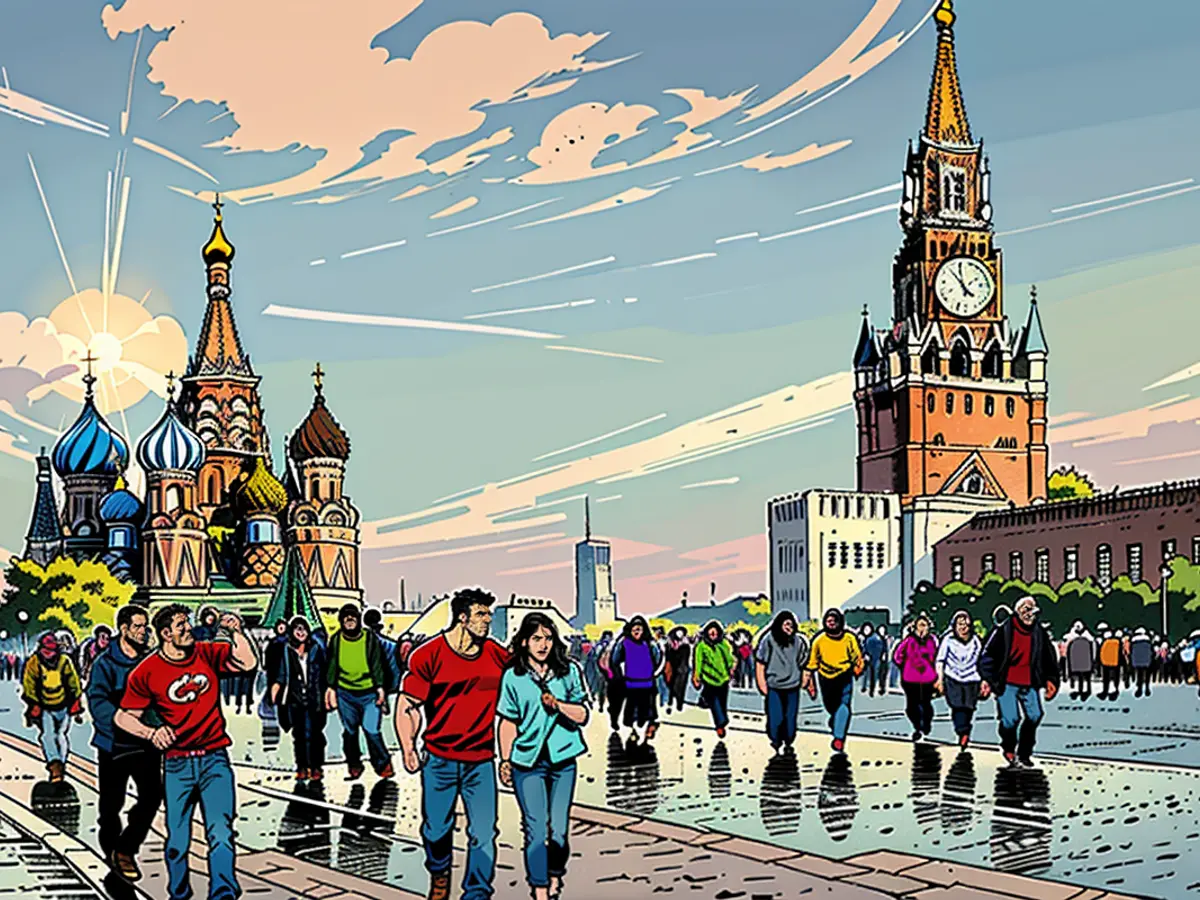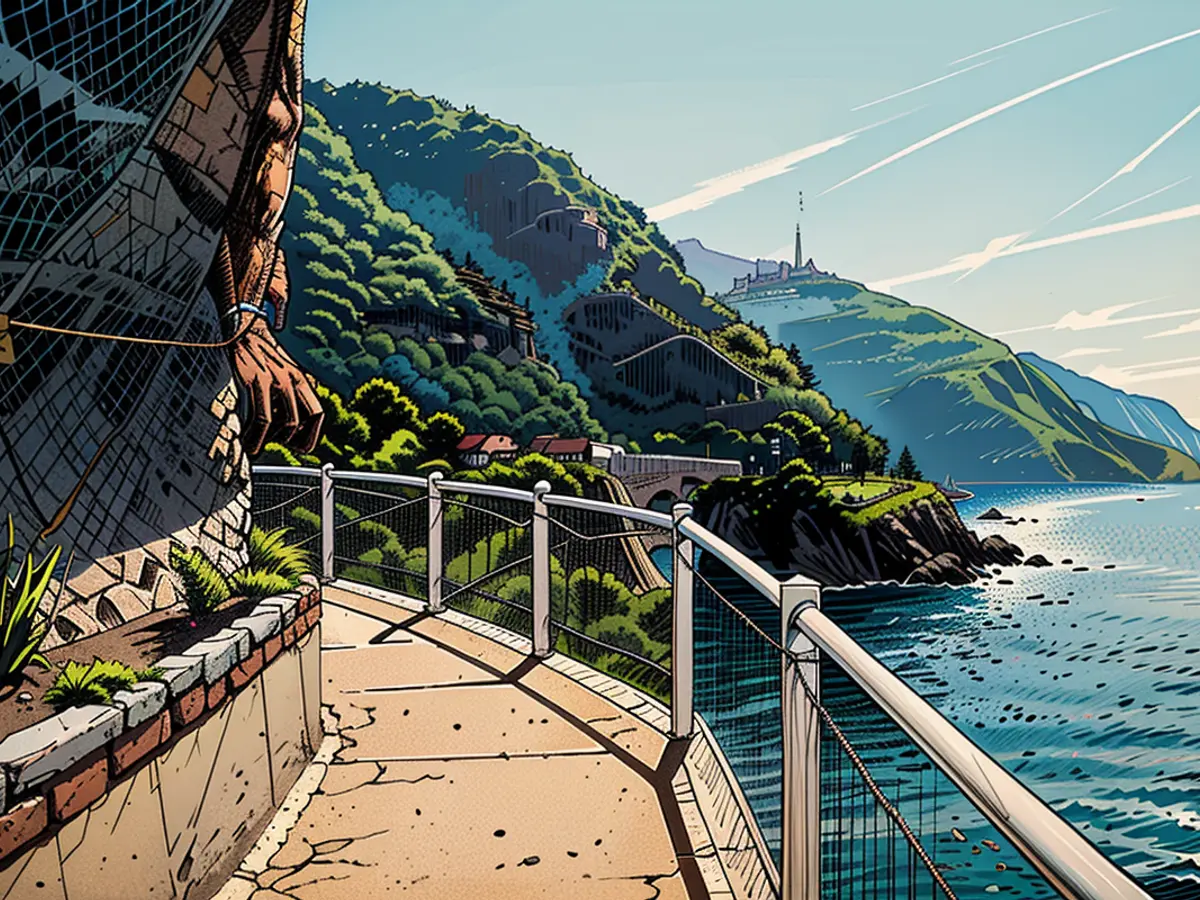Chancellor in crisis region - Scholz with rubber boots in the flood - displeasure from residents
Olaf Scholz wears rubber boots. When the Chancellor arrives for his second flood visit, his footwear could be a sign that the situation has become even worse in recent days - in Verden on the Aller near Bremen, he was still without boots on New Year's Eve. Scholz has little interest in the boot issue and does not want to comment on it when he takes a serious look at the situation on the Helme in the village of Oberröblingen in Saxony-Anhalt on Thursday.
When the Chancellor lands in Sangerhausen by helicopter from Berlin, it is cloudy and rainy - as has often been the case in recent days. The small river Helme, normally only about two meters wide, has burst its banks many times over.
Scholz, Environment Minister Steffi Lemke (Greens) and Minister President Reiner Haseloff (CDU) are shown a dyke that is threatening to burst - and above all they listen and ask questions. For example, they want to know whether there are enough sandbags in stock.
Weeks of flooding in Germany
This question is also on people's minds in other regions of Germany, which have been struggling with flooding for almost two weeks. In Lower Saxony, the continuous rainfall of the past few days has caused water levels to rise again, particularly in the catchment areas of the Hunte river near Bremen and the Hase river in Emsland. In some places, residents are still unable to return to their homes.
In Bavaria, the situation has worsened, particularly in the north, in Franconian regions and in parts of the Upper Palatinate. Some rivers in Rhineland-Palatinate are also much fuller. In North Rhine-Westphalia, a spokesperson for the Ministry of the Environment reported rainfall of up to 35 liters per square meter within 24 hours. However, the water levels across the state had not yet reached the dimensions of the Christmas floods.
In other federal states, the situation has at least not worsened further: for example in Hesse, where the rivers Fulda, Lahn, Eder and Kinzig and their tributaries are still affected. In Saarland, the water levels of the Prims, Oberer Blies and Nied rivers have peaked and are falling.
Not a friendly reception for Olaf Scholz
Tens of thousands of helpers are deployed throughout Germany. Chancellor Scholz speaks to some of them during his visit to Saxony-Anhalt. The approximately 1600 inhabitants have been in a state of alarm since Christmas. "What we need is better coordination. No one here knows what the others are doing," says one resident. Scholz feels the resentment as soon as he arrives. Shouts of "Go straight back" can be heard. But there are also words of thanks, especially from the professional helpers.
The Chancellor is impressed by the solidarity on site. "This spirit of solidarity will also apply afterwards, and we won't leave anyone on their own," says Scholz, who is now wearing lace-up shoes again. He also promises to help with the subsequent repair of the damage. "It's clear that we can only do this together, and we have to show solidarity in Germany."
On site, Lemke points out that in the medium and long term, municipalities, federal states and the federal government need to agree on how to better prepare for such events. "The water needs space, you can see that up close here," she says. It will also be about "how help can be provided, where help is needed, financially, but also in other ways".
Floors as wet as a sponge
The impressions that Scholz gathers on site in southern Saxony-Anhalt are tremendous: flooded meadows and a much wider Helme, over which the drainage from the southern Harz runs. The ground is as wet as a sponge. The campsite at the Kelbra reservoir is under water. People in the region have repeatedly experienced flooding in recent years - but it hasn't been as bad and long-lasting as this time for a long time, says district administrator André Schröder. The Bundeswehr will be deployed from Monday.
According to the local farmers' association, almost every farmer in Lower Saxony is currently affected by flooding or water damage to their fields. "Several hundred thousand hectares of arable land and grassland are flooded," Landvolk President Holger Hennies told the German Press Agency. Hundreds of farms were also affected by flooding, "but fortunately only very few farms were so badly affected that stables were also affected and livestock had to be evacuated".
Pastures and meadows, arable land sown with grain or rapeseed as well as areas with sugar beet or potatoes - farmers fear a total loss of harvest for many areas. In addition, the continuous rain has made cultivation much more difficult, explains Karl-Friedrich Meyer, crop expert at the Lower Saxony Farmers' Association. According to Meyer, winter cereals, i.e. plants that were sown in the fall, "suffocate" when areas are under water for around ten days. Summer cereals can also be expected to yield around 20 percent less.
Rain turns into snow
The German Weather Service (DWD) has warned of continuous rain. It is now set to get colder. "The precipitation in the plagued flood areas is decreasing more and more and turning into snow," the DWD announced on Thursday. Winter is returning, it is getting increasingly cold and icy. The effects of the sub-zero temperatures on the flooded areas remained unclear at first.
Read also:
- Year of climate records: extreme is the new normal
- Precautionary arrests show Islamist terror threat
- UN vote urges Israel to ceasefire
- SPD rules out budget resolution before the end of the year
- The flood region in Oberröblingen, Saxony-Anhalt, has seen the Helme river burst its banks multiple times due to heavy rain.
- Chancellor Olaf Scholz visits the flood-affected area in Oberröblingen, wearing rubber boots as protection against the rising waters.
- The CDU's Minister President of Saxony-Anhalt, Reiner Haselzoff, joins Olaf Scholz and the Green Party's Environment Minister Steffi Lemke in inspecting the flooded areas.
- The helicopter landing in Sangerhausen, from where Scholz traveled to the flood-stricken area, encountered cloudy and rainy weather, similar to the days prior.
- Lower Saxony is also experiencing rising water levels, particularly in the catchment areas of the Hunte and Hase rivers near Bremen and Emsland, due to continuous rainfall.
- Residents in some regions affected by flooding for nearly two weeks express their displeasure towards Chancellor Olaf Scholz upon his arrival in Oberröblingen.
- Scholz addresses the helpers deployed throughout Germany, acknowledging the need for better coordination in managing the crisis and promising aid in repairing damages.
- Germany's environment minister Steffi Lemke emphasizes the need for long-term agreements among municipalities, federal states, and the federal government to improve flood preparation and rescue efforts.
- Despite the recent floods and damage in Bavaria, Oberpfalz, Franconian areas, and Rhineland-Palatinate, the water levels have not yet reached the dimensions of the Christmas floods in North Rhine-Westphalia.
- The German Weather Service (DWD) reports a decrease in rainfall in the flood-affected regions, with temperatures turning colder and precipitation expected to turn into snow.
Source: www.stern.de






